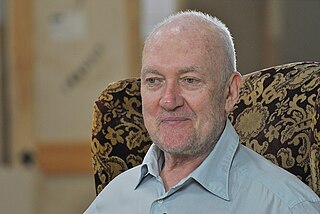
Sean Scully is an Irish-born American-based artist working as a painter, printmaker, sculptor and photographer. His work is held in museum collections worldwide and he has twice been named a Turner Prize nominee. Moving from London to New York in 1975, Scully helped lead the transition from Minimalism to Emotional abstraction in painting, abandoning the reduced vocabulary of Minimalism in favor of a return to metaphor and spirituality in art.
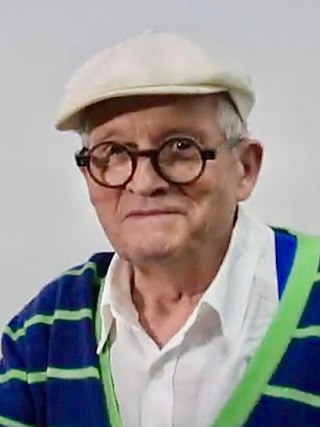
David Hockney is an English painter, draughtsman, printmaker, stage designer, and photographer. As an important contributor to the pop art movement of the 1960s, he is considered one of the most influential British artists of the 20th century.

Tom Friedman is an American conceptual sculptor. He was born in St. Louis, Missouri and received a BFA in graphic illustration from Washington University in St. Louis (1988) and an MFA in sculpture from the University of Illinois at Chicago (1990.). As a conceptual artist he works in diverse media including sculpture, painting, drawing, video, and installation.
Allen Jones is a British pop artist best known for his paintings, sculptures, and lithography. He was awarded the Prix des Jeunes Artistes at the 1963 Paris Biennale. He is a Senior Academician at the Royal Academy of Arts. In 2017 he returned to his home town to receive the award Honorary Doctor of Arts from Southampton Solent University
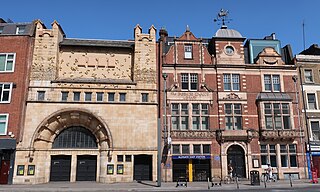
The Whitechapel Gallery is a public art gallery in Whitechapel on the north side of Whitechapel High Street, in the London Borough of Tower Hamlets. The original building, designed by Charles Harrison Townsend, opened in 1901 as one of the first publicly funded galleries for temporary exhibitions in London. The building is a notable example of the British Modern Style. In 2009 the gallery approximately doubled in size by incorporating the adjacent former Passmore Edwards library building. It exhibits the work of contemporary artists and organizes retrospective exhibitions and other art shows.

Howard Ben Tré was an American glass artist. He worked with poured glass, creating small sculptures and large scale public artworks. Glass magazine has called Ben Tré a pioneer in the technique of using hot glass casting in fine art.
Events from the year 1974 in art.

Eva Hesse was a German-born American sculptor known for her pioneering work in materials such as latex, fiberglass, and plastics. She is one of the artists who ushered in the postminimal art movement in the 1960s.
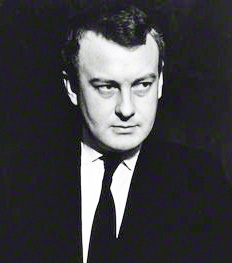
Bryan Robertson OBE was an English curator and arts manager described by Studio International as "the greatest Director the Tate Gallery never had".
Rodney McMillian is an artist based in Los Angeles. McMillian is a Professor of Sculpture at the UCLA School of Arts and Architecture at the University of California, Los Angeles.
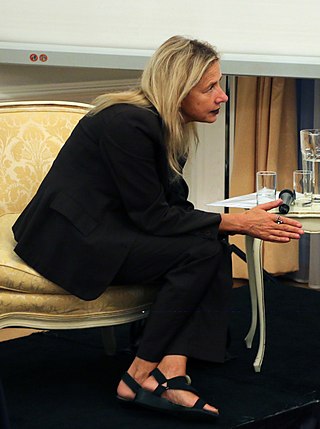
Iwona Maria Blazwick OBE is a British art critic and lecturer. She is currently the Chair of the Royal Commission for Al-'Ula’s Public Art Expert Panel. She was the Director of the Whitechapel Art Gallery in London from 2001 to 2022. She discovered Damien Hirst and staged his first solo show at a public London art gallery, Institute of Contemporary Arts in 1992. She supports the careers of young artists.

Robert H. Hudson is an American visual artist. He is known for his funk art assemblage metal sculptures, but he has also worked in painting and printmaking.
Peter Forakis was an American artist and professor. He was known as an abstract geometric sculptor.

Andrew Sabin is a British sculptor. He studied at Chelsea College of Art (1979–1983) where he worked as a senior lecturer until 2006.

Marjorie Virginia Strider was an American painter, sculptor and performance artist best known for her three-dimensional paintings and site-specific soft sculpture installations.
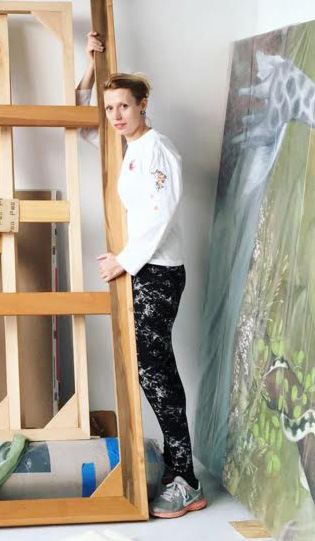
Katerina Lanfranco is a New York City-based visual artist making paintings, drawings, sculptures, and mixed media installations. She was born in Hamilton, Ontario. She studied art at the University of California, Santa Cruz where she received her B.A in Visual Art and in "Visual Theory and Museum Studies". She also attended the Sierra Institute studying Nature Philosophies and Religions while camping in the California wilderness. She received her M.F.A from Hunter College, City University of New York in Studio Art, with an emphasis in painting. In 2004, she studied at the Universitat der Kunst (UdK) in Berlin, Germany on an exchange scholarship. During this time, she also received a travel grant to study Baroque and High Baroque painting in Italy.

Nicole Eisenman is a French-born American artist known for her oil paintings and sculptures. She has been awarded the Guggenheim Fellowship (1996), the Carnegie Prize (2013), and has thrice been included in the Whitney Biennial. On September 29, 2015, she won a MacArthur Fellowship award for "restoring the representation of the human form a cultural significance that had waned during the ascendancy of abstraction in the 20th century."
Leslie Tillotson Thornton was an English sculptor.
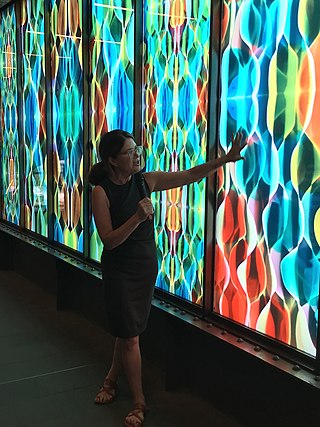
Maureen McQuillan is a New York-based contemporary artist, who, though primarily a painter, has worked in a range of mediums that include drawing, painting, camera-less photography, and sculptural installation. Across disciplines, she uses color and flowing line to create her complexly patterned abstractions.

Brian Wall is a British-born American sculptor now living in California. His work consists mainly of abstract welded steel constructions, and his career stretches over six decades. He has had numerous solo shows, and his sculptures reside in many private and museum collections. He was a faculty member at the Central School of Art in London, and a professor of art at the University of California, Berkeley.














